
Best wishes to GM Simon Williams on his fortieth birthday, this day (November 30th) in 1979.
Simon was Southern Counties (SCCU) champion in the 2001-02 (shared with Simon Knott) and the 2006-07 season.
His Wikipedia entry is here
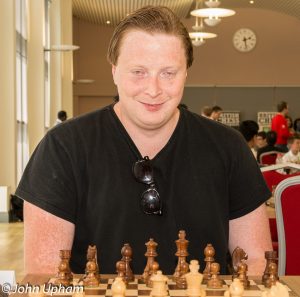
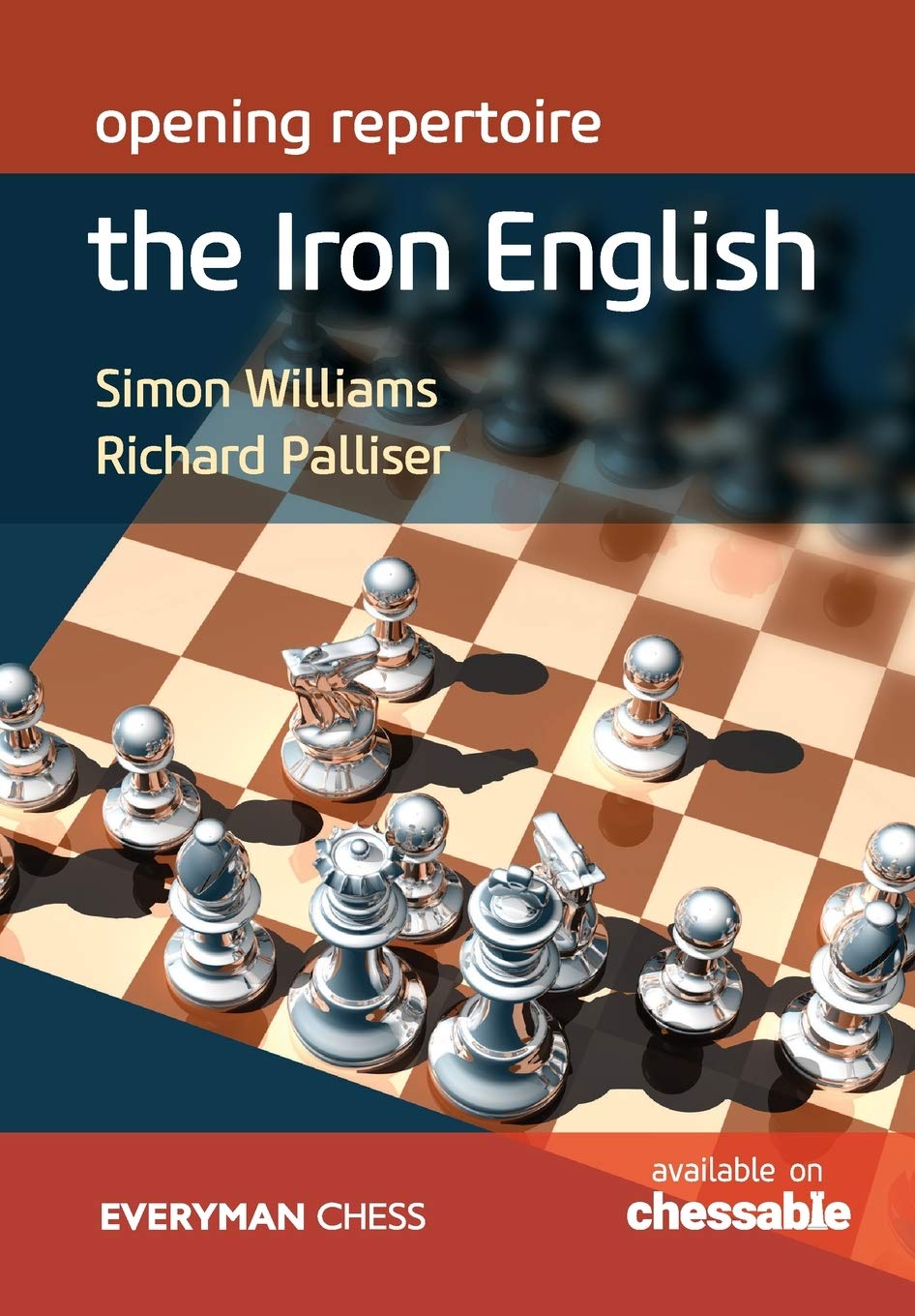

Best wishes to GM Simon Williams on his fortieth birthday, this day (November 30th) in 1979.
Simon was Southern Counties (SCCU) champion in the 2001-02 (shared with Simon Knott) and the 2006-07 season.
His Wikipedia entry is here



The Gijon International Chess Tournaments, 1944-1965 : Pedro Méndez Castedo & Luis Méndez Castedo
Pedro Méndez Castedo & Luis Méndez Castedo
Pedro Mendez Castedo is an amateur chess player, an elementary educational guidance counselor a member of the Asturias Chess History Commission, a bibliophile and a researcher of the history of Spanish and Asturian chess. He lives in San Martin del Rey Aurelio, Spain. Luis Mendez Castedo is an amateur chess player, a full teacher at a state school, a member of the Asturias Chess History Commission, a bibliophile and an investigator of the history of Spanish chess. He lives in Gijon, Spain.
When I mention Gijón, what’s the first thing that comes to mind? Mustard? No, that’s Dijon. Dijon’s in France, but Gijón’s on the north coast of Spain, on the Bay of Biscay.
Small international chess tournaments were held there between 1944 and 1951, then between 1954 and 1956, and, finally, in 1965. These were all play all events, with between 8 and 12 players: a mixture of visiting masters and local stars. A bit like Hastings, you might think, but these tournaments usually took place in July, not in the middle of winter.
The strength of the tournaments varied, but some famous names took part. Alekhine played in the first two events and Euwe in 1951. A young Larsen played in 1956, while other prominent masters such as Rossolimo, Darga, Donner, Prins, Pomar and O’Kelly also took part. The local player Antonio Rico played in every event, with fluctuating fortunes: winning in 1945 ahead of Alekhine and 1948, but also finishing last on several occasions. English interests were represented on three occasions by Mr CHESS, BH Wood.
A nice touch is the Foreword, written by Gene Salomon, a Gijón native who played in the 1947 event before emigrating first to Cuba and then to the United States.
The main part of the book comprises a chapter on each tournament. We get a crosstable and round by round individual scores (it would have been better if these didn’t spill over the page: you might also think that progressive scores would be more useful). We then have, another nice touch, a summary of what was happening in the world at large, and in the chess world, that year. Then we have a games selection, some with light annotations: words rather than variations, giving the impression that little if any use was made of engines.
The book concludes with a chapter on ‘Special Personages’: Félix Heras, the tournament organizer, and, perhaps to entice British readers, BH Wood. Appendices provide a table of tournament participation and biographical summaries of the players.
Returning to the main body of the book, let’s take the 1950 tournament as a not entirely random example. A year in which I have a particular interest.
We learn a little about the football World Cup, the Korean War and a Spanish radio programme, the first Candidates Tournament and the Dubrovnik chess olympiad.
The big news from Gijón was the participation of the French player Chantal Chaudé de Silans, the only female to take part in these events, and rather unfairly deprived of her acute accent here. She scored a respectable 3½ points, beating Prins and Grob (yes, the 1. g4 chap).
Rossolimo won the event with 8½/11, just ahead of Dunkelblum and Pomar on 8. Prins and Torán, playing in his home city, finished on 7 points.
This game, between Arturo Pomar and Henri Grob, won the first brilliancy prize.
1. d4 Nf6 2. c4 g6 3. Nc3 d5 4. cxd5 Nxd5 5. g3 Bg7 6. Bg2 c6 7. e3 h5 8. Nge2 h4 9. Qb3 Nxc3 10. bxc3 Nd7 11. a4 Nb6 12. a5
12… Nd7 13. a6 Qc7 14. Qc4 Nb6 15. Qc5 Rh5 16. Qa3 bxa6 17. Nf4 Rh8 18. Qc5 Bb7 19. Ba3 e5 20. Nd3 exd4 21. cxd4 Rh5 22. Ne5 O-O-O 23. g4 Nd7 24. Qc2 Rxe5 25. dxe5 Nxe5 26. Rb1 h3 27. Be4 Nxg4 28. Ke2 a5 29. Rxb7 Kxb7 30. Rb1+ Kc8 31. Bxc6 Ne5 32. Bb7+ Kb8 33. Ba6+ Qb6 34. Bd6+ Ka8 35. Rxb6 1:0
The annotations – by result rather than analysis – neither convince nor stand up to computer scrutiny. We’re told at the start of the game that ‘Pomar takes the initiative from Black’s error in the opening and does not relinquish it until the final victory’, but the annotations refute this claim. After criticizing several of Grob’s moves but none of Pomar’s, we’re told, correctly, that Black could have gained an advantage by playing 25… Qa5+. However, Grob’s choice was second best, not a ‘serious mistake’: Stockfish 10 tells me 26… a5 was still better for Black, and 27… a5 (in both cases with the idea of Ba6) was equal, though I guess those moves might not be easy to find without assistance. It was his 27th move, and perhaps also his 26th, which deserved the question mark.
This game was played in the last round of the tournament, on 26 July 1950. Two days later a boy would be born who would learn chess, develop an interest in the game’s history and literature, and be asked to review this book. What is his verdict?
An enjoyable read, a nice book, but not a great book. If you collect McFarland books you’ll want it. If you have a particular passion for Spanish chess history, you’ll want it. Otherwise, although the book is not without interest, it’s probably an optional extra.
The tournaments, apart perhaps from Alekhine’s participation in the first two events, are not, in the overall scheme of things, especially significant. The games, by and large, aren’t that exciting. The annotations are, by today’s standards, not really adequate. The translation and presentation could have been improved.
Just another thought: we could do with a similarly structured book about the Hastings tournaments. There was one published some years ago, but a genuine chess historian could do much better.
Richard James, Twickenham 20 November 2019

Book Details :
Official web site of McFarland

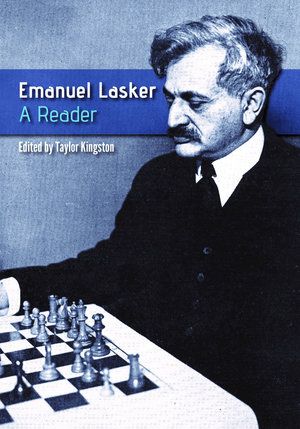
Emanuel Lasker: A Reader: A Zeal to Understand : Taylor Kingston
Taylor Kingston
Taylor Kingston has been a chess enthusiast since his teens. He holds a Class A over-the-board USCF rating, and was a correspondence master in the 1980s, but his greatest love is the game’s history. His historical articles have appeared in Chess Life, New In Chess, Inside Chess, Kingpin, and the Chess Café website. He has edited numerous books, including the 21st-century edition of Lasker’s Manual of Chess, and translations from Spanish of The Life and Games of Carlos Torre, Zurich 1953: 15 Contenders for the World Championship, and Najdorf x Najdorf. He considers the Lasker Reader to be the most challenging and interesting project he has undertaken to date.

When I’m asked who my favourite chess player is, I always answer ‘Emanuel Lasker’.
Why? Partly because he was a player who didn’t really have a style. Like Magnus Carlsen, with whom he has sometimes been compared, he just played chess. But more because he was such an interesting personality. Unlike most champions (Euwe and Botvinnik were exceptions) he had a life outside chess, on several occasions taking long breaks from the game. And what a life it was: mathematician, philosopher, writer, playwright, bridge player, and, lest we forget, chess player.
Chess historians are finally taking notice of this fascinating man. In 2009 a massive volume about him was published in German, edited by Richard Forster and others. Last year the first of three volumes of a greatly expanded edition of this work appeared in English. If you have any interest at all in chess history you should certainly possess this book, and, like me, you’ll be eagerly looking forward to volumes 2 and 3.
What we have here might best be seen as a companion to this work, and, if you’re a Lasker fan or have any interest in chess history you’ll want this as well.
Taylor Kingston has compiled and edited a collection of Lasker’s own writings, not just on chess but covering every aspect of his multi-faceted personality.
We start with the London Chess Fortnightly, which Lasker published for a year between 1892 and 1893, annotating his own games as he was trying to establish himself as a contender for Steinitz’s world title. Here and throughout the book, the editor adds the occasional contribution from Stockfish 8.
Lasker and Steinitz met in 1894, with our hero becoming the second official world champion as a result of winning the match. Both players annotated some of the games for newspaper columns. In 1906 Lasker published this in his chess magazine, which we’ll come to later, but in this book they appear in the correct chronological place.
The Hastings 1895 tournament book (if you don’t have a copy I’d like to know why) was unusual in that all the games were annotated by one of the other participants. The six games Lasker annotated feature here.
Lasker’s first book, Common Sense in Chess, was published the following year. We have here an extract from Chapter 9, the End Game.
We then jump forward to 1904. The longest and, for chess players, perhaps the most interesting section of the book covers Lasker’s Chess Magazine, which was published in New York between November 1904 and January 1909. The games themselves give the reader an overview of chess during those years, with amateurs as well as masters being represented. Lasker’s annotations and, in some cases, game introductions, were often colourful in nature and tell us a lot about the man himself.
Burn-Forgacs (Ostend 1906), for instance, ‘begins like a summer breeze and ends like a winter’s gale’.
1. d4 d5 2. c4 e6 3. Nc3 Nf6 4. Bg5 Nbd7 5. e3 c6 6. Nf3 Qa5 7. Nd2 Ne4 8. Ndxe4 dxe4 9. Bh4 e5 10. Be2 f5 11. O-O g6 12. c5
‘Here the red lantern flashes out; queen and bishop prepare to take the diagonal from b3 to e6 and f7, which are woefully weak, and the black king will be in grave peril.’
12… Bg7 13. Qb3 Nf8 14. Bc4 Qc7 15. d5 h6 16. d6 Qd7 17. Be7 Ne6 18. Nb5 cxb5 19. Bxb5 1-0
Another major chapter concerns the 1908 Lasker-Tarrasch world championship match. After some details of the background to the match (there was little love lost between the two players: Edward Lasker quoted Tarrasch as saying ‘the only words I will address to him are check and mate!). Taylor Kingston presents the games with annotations from Lasker’s Chess Magazine, Tarrasch’s book of the match and other contemporary sources, along with the usual computer interjections.
We then have a chapter on Lasker’s unsuccessful 1921 match against Capablanca, and another on his non-appearance at New York 1927. Lasker’s Manual of Chess was first published in German in 1926: here we have an excerpt in which he discusses the theory of Steinitz.
Lasker’s chess writings are completed by an article on Lasker and the Endgame by guest contributor Karsten Müller, and a short section on Lasker’s problems and endgame studies.
The last 75 pages of the book consider other aspects of Lasker’s life: his philsophy, his contributions to mathematics, and Lasca, a board game he invented.
Perhaps the most interesting section offers extracts from The Philosophy of the Unattainable, his most important philosophical work, published in 1919. As far as Taylor Kingston is aware, it has never been published in English.
Lasker’s last work, The Community of the Future, was published in 1940, five months before his death. Here, Lasker considers the problems faced by the world and proposes a ‘non-competitive community’ as his solution, with ‘self-hope co-operatives’ to deal with unemployment. Again, fascinating reading, and, you might think, his utopian ideas are still of some relevance today.
The book is a well-produced paperback. There are a few notation errors caused by translation from descriptive to algebraic, but this shouldn’t cause you too much bother. I hope I’ve convinced you that this book deserves a place on your shelves.
Richard James, Twickenham 20 November 2019

Book Details :
Official web site of Russell Enterprises

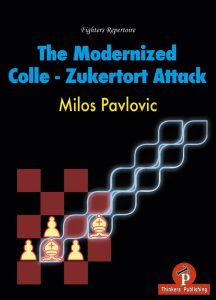
Grandmaster Milos Pavlovic was born in Belgrade in 1964 and was Yugoslav Champion in 2002. He is a well known theoretician specialising in opening theory and has written many chess books and magazine articles.

This is his third title in the “Modernized” series from Thinkers Publishing with a fourth on the Scotch Game being published on November 17th. We first reviewed a title in this series with The Modernized Caro-Kann from GM Daniel Fernandez.
As with every recent Thinkers Publishing publication high quality paper is used and the printing is clear. The book can easily be laid flat next to the board and does not require weights to prevent it from “self-closing” (a particular bugbear of ours !). Each diagram is clear and the instructional text is typeset in two column format, which, we find, enables the reader to maintain their place easily. Figurine algebraic notation is used throughout and the diagrams are placed adjacent to the relevant text and each diagram has a “to move” indicator.
The main content is divided into ten chapters of which the first six concern lines in which Black plays an early d5 (usually 1.d4 d5) and the remainder where Black does not (usually playing 1.d4 Nf6).
There is no index which, unfortunately, is a standard feature of Thinkers Publishing books. Also missing is a bibliography.
This is a repertoire book for the White player utilizing the undeservedly less popular Zukertort flavour of the Colle System. In the “CZ” System the c1 (Queen’s for the more mature reader !) bishop is developed to b2 rather than the c1 – h6 diagonal as in the Koltanowski flavour of the Colle System. Typically therefore White attempts to establish a structure of the sort :
and play for ideas such as Ne5, f4 Rf3, Rg3 and checkmating attacks involving the bishop pair. These are often similar to the famous Lasker – Bauer game of 1889.
On the other hand we have the possibly more familiar Colle-Koltanowski structure of :
and the main idea of the latter is to advance e4, e5 and the launch a fairly clockwork attack against Black’s kingside.
Both of these approaches have been served by books, videos and instructional DVDs of the “Winning with the X” sort with the most well known players of the Colle-Zukertort being Aaron Summerscale, Artur Yusupow, Susan Polgar and Vladimir Kramnik.
We have no intention of “spilling the beans” on all of the many and varied ideas presented by Pavlovic : you should buy the book and find out for yourself. However, as past players of the CZ ourselves we noticed interesting advice on the move order advised. The traditional move order in possibly the most challenging main line has (more or less) been :
1.d4 d5 2.Nf3 Nf6 3.e3 e6 4.Bd3 c5 5.b3 Nc6 6.0-0 Bd6 7.Bb2 0-0 8.Nbd2 leading to the following well-known, traditional position :
and David Rudel in his various evangelistic style CZ books advocated 8.Ne5 instead. In The Modernized Colle-Zuckertort we have this new move order :
1.d4 d5 2.Nf3 Nf6 3.e3 e6 4.Bd3 c5 followed by the provocative 5.0-0 ! giving us this position
which appears (well, it does!) to allow 5…c4!? This early castles move order is, in itself, modernizing and advocated by none other than the fourteenth World Champion, Vladimir Kramnik ! Other adherents of this move order include Artemiev, Vaganian and Romain Edouard, Editor of Thinkers Publishing.
To give you a feel for the book here is a sample
One idea that caught our eye was a recommendation of how to meet the Classical Dutch when played via
1.d4 e6 2.Nf3 f5
and you might expect a line to of the CZ to be recommended but you’d be quite wrong. We won’t spoil the surprise by telling you here ! Suffice to say this is not a formulaic “Play the CZ against everything and win” style of approach. You’d be disappointed if it was !
This book contain a veritable potpourri of new ideas and material plus strategical concepts for the White player in the CZ System. It offers much more than one of the cheesy “Play this Opening and you will win” style books that we are all familiar with. Having owned all (English Language) books and DVDs we would suggest that this is the most academic and the most appealing to players wanting to make the CZ a serious weapon of theirs. In the “club player opening book wars” this book redresses the balance with the recent splurge of London System books and videos.
Get this book and you will learn about middlegame, plans of attack and a wealth of other themes : highly recommended !
John Upham, Cove, Hampshire, 17th November, 2019

Book Details :
Official web site of Thinkers Publishing
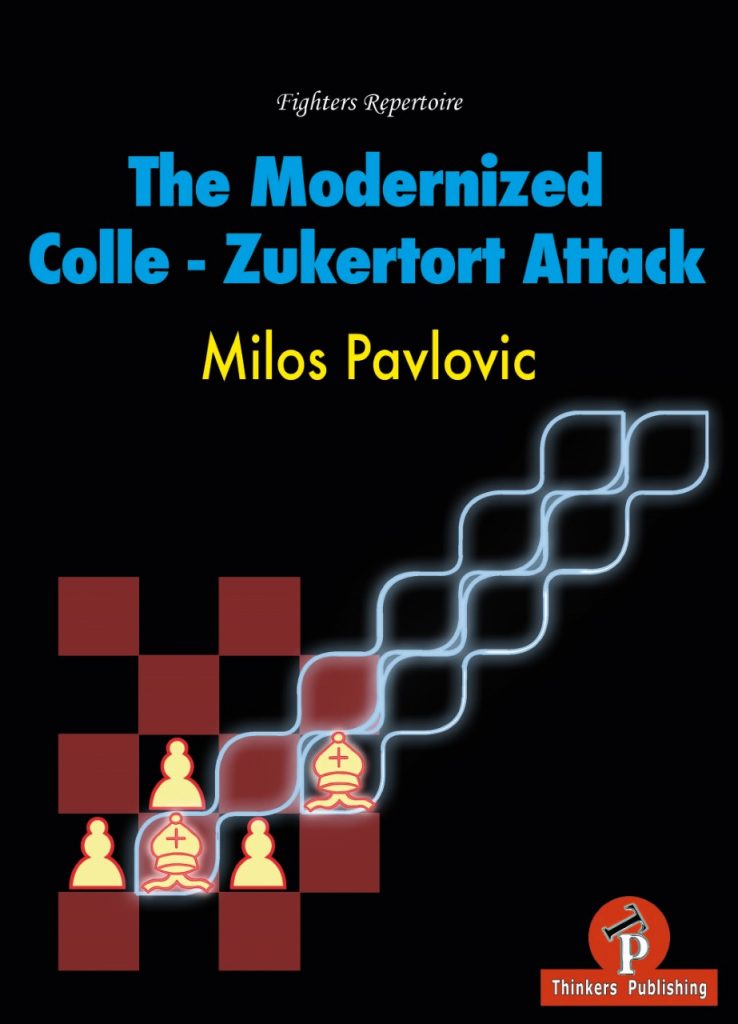

Best wishes to IM Charles Alexander Cobb born on this day (November 15th) 1978
Charleshas plays / played for Bristol and Clifton Chess Club, maintains a rapidplay grading of 220, played for Bristol in the Four Nations Chess League His highest Elo rating was 2410 in October of 2006.

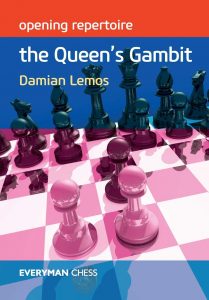
GM Damian Lemos (FIDE : 2479) was born in 1990 and hails from Argentina. He is a former Pan-American Junior Champion and he achieved the FIDE Master title at 14 years old, International Master at 15, and Grandmaster at 18 and is well known on many chess web sites for providing recorded and real time instructional videos on all aspects (but mainly opening theory) of chess. This is his second book for Everyman Chess.

The book is divided into seven main chapters as follows :
Damian Lemos presents a repertoire for White based around the best regarded flavour of the QGD, Exchange Variation or QGE : this is the version in which White delays Nf3 allowing the central push f3 followed by e4 and the typical resultant structure is :
The alternative version of the QGE in which White plays an early Nf3 and follows with a minority attack on the queenside is not treated in this book.
Strong grandmasters generally do not like being on the Black side of the QGE since counter-play is minimal so by selecting the QGE you should have a small edge that can be worked with.
White’s move order in most lines therefore is 1.d4 d5 2.c4 something and then 3.Nc3 so if you already play the Queen’s Gambit but with a 1.d4 d5 2.Nf3 something 3.c4 move order then this repertoire will be a substantial change for you.
Chapter 1 is presented via the now familiar and reliable method of a number (15) of high quality and recent instructive games analysed in depth.
Taking on the Tarrasch Defence Lemos goes down the road of the classical Rubinstein (fianchetto) approach showing how White can retain a nagging edge against the Black IQP.
The Slav Defence is approached using an active piece placement strategy based around the seemingly innocuous Exchange Variation : underestimate this line at your peril if you play the Slav !
The Queen’s Gambit Accepted is faced with the direct 3.e4 with in-depth coverage including all of Black ideas especially the most combative of 3…e5. The QGA receives the most comprehensive treatment in terms of pages (56) and with thirteen games analysed in detail.
The Chigorin Defence merits only three games reflecting its rarity at club and more exalted levels. Again, ignore the Chigorin at your peril !
Club players favourite, the Albin Counter-Gambit is examined via four games.
Rounding off in the “Other Defences” bargain basement section we find lines for White to deal with The (solid) Stonewall Variation of the Dutch, The somewhat discredited Marshall Defence, The (early) Tarrasch with 2…c5 and finally, The Baltic Defence which is common at club level.
A couple of small gripes with the production are : the diagrams do not have a “to move” indicator. secondly, some Everyman books (but not this one) have an extra folding part to the front and rear covers. These we find protect the book from damage and also can be used as an emergency book mark ! Also, chapters 3-5 all have the same page heading of the Chigorin Defence which confused us! We suspect that this error will be fixed.
Overall, this book provides a welcome repertoire based on exchanging on d5 that is fairly easy to learn and sound with decent winning chances for White. The QGE chapter is possibly the most interesting from the strategic perspective and gives White a clear plan to follow.
It is also fair to say that players of the Black pieces who employ the Chigorin, Tarrasch and particularly the QGA will also benefit from this book : they can see the authors suggested lines for the White and Black’s corresponding ideas.
John Upham, Cove, Hampshire, 12th November, 2019

Book Details :
The book is available as a physical book and as a Kindle version.
Official web site of Everyman Chess
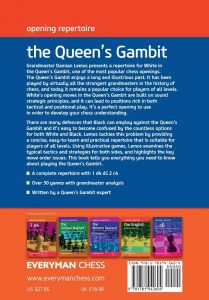
Chess Tactics Workbook for Kids : John Nunn
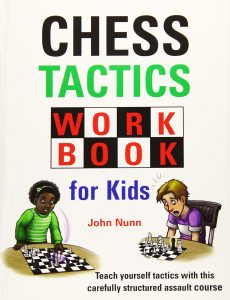
John Nunn has written around thirty books on chess and many of these are some of the finest chess books published in any language : Secrets of Pawnless Endings (1994, Batsford) easily is a candidate for the all time list. John is a director of Gambit Publications Ltd. together with Murray Chandler and Graham Burgess.

Chess Tactics Workbook for Kids is the sixth (a seventh and eighth are scheduled for January 2020 publication) in a highly successful series of “for Kids” books. Indeed, we recently reviewed Chess Opening Traps for Kids. The Workbook theme is likely to be extended other “for Kids” style books from Gambit Publications.
This workbook is a follow-up to the original (2003) and much liked Chess Tactics for Kids by Murray Chandler :
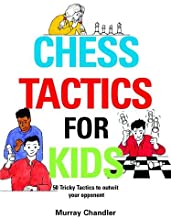
Chess Tactics Workbook for Kids is robustly (!) hardbound in a convenient size such that weights are not need to keep it propped open (unlike some A5 paperbacks) meaning studying with this book is more convenient than with many books. The layout and printing is clear (as you would expect with Gambit) with numerous diagrams at key moments in each, relatively short, game. In essence, players under 18 (for whom this book is intended) will find it easy to dip in out of and it can be used without a board (although BCN and most chess teachers and coaches would always recommend following each game on a “proper” board).
As you would expect with Gambit, the notation is English short form algebraic using figurines for pieces. A previous criticism (ibid) has been addressed in that each diagram has a symbolic “whose move it is” indicator. Each diagram does have coordinates which are very welcome for the younger junior reader.
The book is divided into 13 chapters as follows :
Chapters 1 – 12 each contain a description of the type of tactic that is subject of the chapter followed by 20 – 40 exercises for the reader followed by a set of more challenging “Tougher Positions” and then, interestingly, by a set of “Does the Tactic Work ?” exercises. We appreciated the latter especially since this appears to be a novel feature. These are excellent blunder prevention tests since they help to slow typical impetuous juniors down who often move first and then engage their brain.
It was clear when working through the easier set of exercises that the author had thought carefully about their sequence since the reader should (we did for sure !) notice the level of difficulty increasing slowly but surely. The solutions are remote from the puzzles nicely avoiding the “accidentally seeing the solution” issue one gets with lesser books. The solutions themselves are clear and concise and instructional in their own right.
Here is a particularly satisfying example (we thought so anyway !) from the Skewer chapter (Tougher Positions #23) *solution at bottom of this review
We particularly enjoyed the chapters on “Trapped Piece” and “Forcing a Draw” as these are less usual to find in books of this kind.
Here is a pleasing (well, we liked it here in the BCN editorial office) example (#30) from the “Does the Tactic Work?” section of the skewers chapter :
@and the solution is at the foot of this review
We enjoyed working through the chapters and emerged with a feeling of attending a mental gymnasium : exhausted but refreshed.
Chapter 13 (“Test Papers”) puts all of your newly learnt skills to a full and proper test since there are no themes, hints or clues of what to do : just like a real game !
One negative comment we would make concerns the cover. “Never judge a book by its cover” we are told and you might look at this book cover and think it was suitable for say primary aged children. We would say not but we would suggest it suitable from secondary aged children. We would say strong juniors from 12 upwards would read this book and enjoy it.
As we previously mentioned in our review of Chess Opening Traps for Kids, The title and cover might, perhaps, put off the adult club player market. However, the content is totally suitable for adult club players upto say 150 ECF or 1800 Elo.
In summary, we recommend this book to any junior or adult who wishes to improve their tactical vision and results. It makes an excellent stocking filler for young players and the young at heart !
John Upham, Cove, Hampshire, November 11th 2019

Book Details :
Official web site of Gambit Publications Ltd.
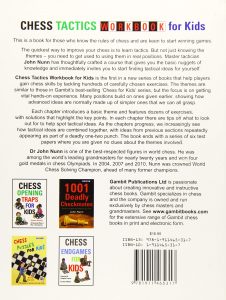
*solution to Skewer exercise #23 : “Normally this material would lead to a draw, but White can win with a brilliant tactical idea : 1.Bd6!! (the only defence to the threat of 2.Qd3# is to take the bishop) 1…Qxd6 2. Qd3+ Kc5 (2…Ke5 3.Qg3+ is a mirror image) 3.Qa3+ and the queen falls.”
@solution to Skewer exercise #30 : “It seems impossible to save the game because after both side promote White has a skewer, but there is a miraculous defence : 1…g2 2.c8=Q g1=Q 3.Qc5+ Ke2! and further checks don’t help White, while after 4.Qxg1 Black is stalemated.”

We have learnt the sad news that popular longtime Arbiter and Organizer David Welch has passed away at the age of 74 after a long illness : he was being cared for in The Royal Liverpool Hospital.
David was born on Tuesday, October 30th 1945 in Brampton, Chesterfield, Derbyshire and he played for Wallasey Chess Club for many years having initially been a member of Liverpool Chess Club.
He attended Queens’ College, Cambridge reading Natural Sciences (Chemistry) and (according to John Swain) David served Cambridge University Chess Club as Junior Treasurer, Librarian and Bulletin Editor.
In 1968 David and Peter Purland started teaching at the same Liverpool school on the same day and continued their friendship from there.
David became a BCF arbiter in the early 1970s eventually becoming the BCFs Chief Arbiter and then the ECFs Chief Arbiter and was heavily involved in many British Championships around the country.
David was curator of ECF equipment for some time and personally funded much of the BCFs and ECFs early equipment stock.
He became a FIDE International Arbiter as early as 1977 and was awarded the FIDE International Organizer title in 2010.
David shared the exact same date of birth as long time friend and fellow arbiter, Peter Purland.
Here is an excellent tribute from John Saunders
Here is a tribute from Liverpool College
in 2016 David received recognition from FIDE for his long service as an International Arbiter. David was the third English arbiter to receive the honour, following Stewart Reuben and Gerry Walsh in 2014.

We send our condolences to all of his many family and friends.

We remember Charles Edward Kemp who passed away, this day, November 9th, 1986
From The Encyclopaedia of Chess (Batsford, 1977), Harry Golombek OBE, John Rice writes:
“British problemist, specialist in fairy problems. Editor with D. Nixon of Fairy Chess Review, 1952-8. Co-author, with K. Fabel of Schach ohne Grenzen (Chess Unlimited) (1969), an anthology of T.R.Dawson’s work. International Judge (1964). ”
Using a Google translation from the Italian(!) wikipedia article we have
“Charles Edward Kemp ( Manchester , November 18, 1901 – Manchester , November 9, 1986 ) was a British chess composer .
He composed over 600 problems , many of which were of help and Fairy (with heterodox pieces ). He often collaborated with Thomas Rayner Dawson in editing the Fairy Chess Review , founded by the latter ..
Together with Karl Fabel he wrote the book Schach ohne Grenzen (“Chess Without Borders”), Walter Rau Verlag, Düsseldorf, 1969.
In the second problem reported below, the heterodox piece called Grillo (” Grasshopper ” in English, represented by an inverted Woman ) appears . Remember that this piece moves along the columns or diagonals, but only by skipping a piece (of both colors) and completing the move in the next house; if an opposing piece is found, it will be captured. In any case, even without moving, he acts on this house. The black cricket in c4, for example, can make only five moves: c4-c2, c4xe4, c4-c7, c4-f7 and c4-f1; in all the houses of arrival it does not check the white king.”
(From https://it.wikipedia.org/wiki/Charles_Edward_Kemp)
CEKs Compositions are given here.